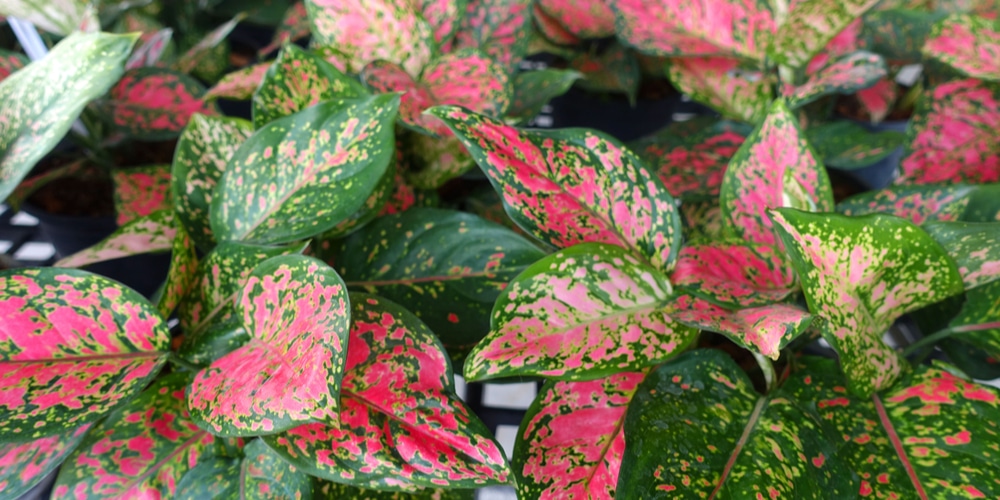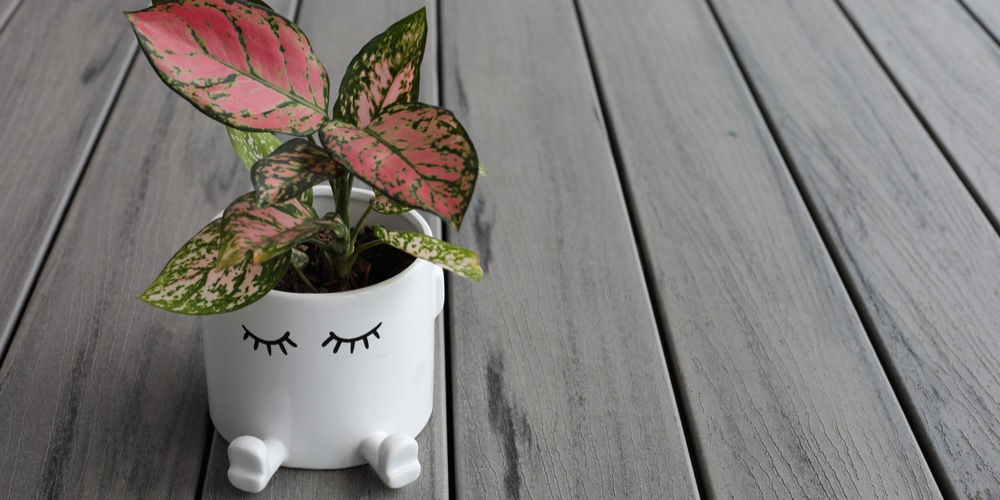Although green plants are lovely, people occasionally yearn for brighter hues and patterns. Aglaonema (Aglaonema commutatum), also known as ‘Chinese evergreens,’ offers both.
With remarkably patterned foliage in pink, jungle green, silver, red, silver, and yellow, as well as stripes, specks, and gradients, the flower is vast and varied and often colorful and vibrant. Aglaonema is the plant for you if you want to add some color to your space.
You can find these leafy plants in Asia’s subtropical and tropical regions. It’s a popular indoor plant that’s also very simple to grow. Aglaonemas are ideal for a contemporary office or living room, a dark bedroom, or a relaxing study.
However, because Aglaonema is moderately toxic to humans, you’ll want to be extremely careful when planting it.
How to Care for Aglaonema Pink plant

They’re an excellent option for less-than-ideal lighting or distracted plant owners due to their sensitivity for both dry and moist conditions, as well as the notion that they flourish in low light.
Light
The Aglaonema favors bright light that is not direct. It can adjust to low light; however, that will significantly slow its growth. The plant can tolerate natural morning light but prevent afternoon sunlight from tearing the leaves. Use a Grow Light if you don’t have a suitable location for your Aglaonema. If the pink coloration on your Aglaonema starts to fade, try moving it to a brighter, indirect light location.
Fortunately, this plant is among the best indoor plants for low light levels in a home. These plants thrive next to a window with a Northern exposure, that’s indirect light, or rather an Eastern orientation, the morning sun. A few hours of sun in the morning or late afternoon is entirely alright and even beneficial.
Turn the Aglaonema once or twice a week to promote even development and a more stable plant. If you leave them in the very same position for a long time, all of the leaves will flex towards the brightness, a process called phototropism, giving the plant an imbalanced appearance.
Water and Soil Requirements
Keep the soil of your Aglaonema pink plant just hydrated but not wet, and don’t let it dry out entirely. You will require watering more regularly in the summer and spring and less often during winter.
When the plant’s leaves droop, it’s telling you it’s becoming too dry. They must perk up again shortly after you water them. If your plant’s foliage is a yellowish color or the stalks feel soggy, it’s a symbol that it’s receiving excessive water.
The best soil type for the Chinese evergreen to develop is houseplant soil with perlite, but any properly-draining peat-based mix will suffice. Aglaonema growers should use slightly acidic soil with a 5.6-6.5.
Temperature needs
Aglaonema houseplants favor temperatures of 60�F or higher. Because Chinese evergreens are cold-sensitive, you should keep them away from heating vents, cold drafts, and air conditioning. They’ll sulk, and if you have the plant wet and cold, you’ve created the perfect environment for root rot. Note that the USDA zones 10 and 11 are ideal for Aglaonema plants.
Fertilizer
Once or twice during the growing season, that’s spring all through to summer, use a complete liquid fertilizer, slow-release fertilizer, or fish or seaweed emulsion on the Aglaonemas. When it gets to fertilizers, Aglaonemas aren’t too picky. You can feed it with a 3-1-2 NPK ratio, or applying the usual healthy liquid fertilizer like 10-10-10 every month, will encourage growth and vibrant foliage color.
Common diseases
Curvularia infection
It causes the petiole to stretch downwards, causing the plant to wilt. A closer look reveals that the roots and stem start to rot after the foliage begins to contort.
Bacterial leaf spot
Little dark and grey-green leaf patches enlarge and change shape, becoming tan, black, or brownish. It would help if you bought plants that have no disease infection. Please get rid of the infected fronds and water them in a way that preserves the leaves’ surface dry.
Chlorophyll destruction
Plants’ young leaves become lighter and lighter in color until they are entirely white, yellowish, or pink. On the young leaves, there’s a gradual loss of chlorophyll. Besides the plant’s ultimate color, the roots are relatively routine. The plants take on a bleached appearance. Mesophyll collapse causes the leaves to thin out and become sword-shaped flags.
Common Problems
The following are the common issues with (The Plant)
Drooping leaves
If your plant’s leaves are drooping, it’s dehydrated, so offer it a massive glass of water and pay attention to it to keep the soil from completely drying out. Check the soil if its leaves are wriggling and becoming droopy. In the vast majority of instances, your soil is arid.
Dry Leaf Suggestions
Dried-out leaf tips are one sign that the Aglaonema is becoming more problematic. Tipping is a sign of various problems, including excess watering and fertilizer application.
Yellow leaves
If the plant’s leaves start to turn yellow, you’re probably overwatering it. Reduce the water used and allow the soil to dry out more between applications.
Propagation
Aglaonema stem cuttings are very effortless to propagate in soil or water. Propagation during the toasty growing season will yield the best results. The steps for properly propagating aglaonema plants are as follows.
Step 1: Locate a better and healthier shoot on the parent plant you want to cut. The stem must be around six inches long and have approximately five leaves. For propagation, you can use both older and newer shoots.
Step 2: Make a diagonally angled cut in the stem of the shoot just under the leaf node with clean, sharp gardening shears or blades. Remove a bunch of the cutting’s bottom leaves.
Step 3: When using the water technique, fill a jar or glass with an adequate amount of water to submerge the leaf nodes, though not the remaining foliage, and immerse the clipping inside the water.
Aglaonema pink plant Care: Take away
Are you now ready for the Aglaonema Pink plant? This vibrant houseplant is low-maintenance and oh-so-attractive!
Sources
https://bloomscape.com/plant-care-guide/aglaonema/#g2
https://www.joyusgarden.com/aglaonema-lady-valentine-care/
https://www.ohiotropics.com/2020/06/27/aglaonema-chinese-evergreen-care/
